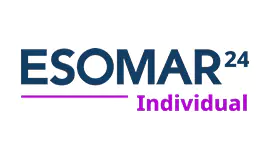The creation of an impermeable layer of just few millimeters thick by using nano-particles is known as micro packaging. The flexibility, isolation, and cost effectiveness provided by this technique makes it an appealing packaging technique. Micro packaging has been employed in food, beverages, and pharmaceutical industries. The leaking of oxygen into the package results in increased rate of oxidation, which will reduce the shelf life of the product. Also, contamination from dust and pathogens will affect food quality. An alternative to micro packaging is coating of metal or glass on the packaging, but this will result in reduced flexibility.
The major drivers are the advantages of food, beverages, and pharmaceuticals lasting longer, coupled with remaining free from any contamination. The major challenges are leaching of nano-particles into the food stream. Investment in R&D is required to examine effects of nano-particles on human health. Also, expensive manufacturing technology and lack of technical know-how has hindered the market growth.
Micro Packaging Market Taxonomy
On basis of Packaging function, the Micro packaging market is segmented into:
On basis of packaging type, the Micro packaging market is segmented into:
On basis of end user industry, the Micro packaging market is segmented into:
Primary packaging is the layer, which is in contact with the product. Its function is to provide protection to the product from external factors and isolate it from the environment. Any subsequent packaging layers can be installed after this layer. The secondary packaging’s use is to protect the primary packaging layer and also serve branding, promotion, and logistical purposes. Any additional packaging is also called tertiary packaging.
The pharmaceutical industry is expected to be the largest driver of the micro packaging market in both packaging and drug delivery applications. Increased shelf life of medicines has fueled the use of micro packaging.
Micro Packaging Market Outlook
The European Union (EU) in 2017 awarded the NanoPack consortium US$ 8.8 million (€7.7 million) to develop anti-microbial surfaces to improve shelf life of products. The consortium was led by Technion-Israel Institute of Technology and has seventeen more partner organizations.
Major players in the micro packaging market are Alcoa Inc, Amcor, Bemis, Beijing ChamGo Nano-tech Co. Ltd, Color Matrix Corporation, Honeywell, InMat.
Share
Share
About Author
Pankaj Poddar is a seasoned market research consultant with over 12 years of extensive experience in the fast-moving consumer goods (FMCG) and plastics material industries. He holds a Master’s degree in Business Administration with specialization in Marketing from Nirma University, one of India’s reputed institutions, which has equipped him with a solid foundation in strategic marketing and consumer behavior.
As a Senior Consultant at CMI for the past three years, he has been instrumental in harnessing his comprehensive understanding of market dynamics to provide our clients with actionable insights and strategic guidance. Throughout his career, He has developed a robust expertise in several key areas, including market estimation, competitive analysis, and the identification of emerging industry trends. His approach is grounded in a commitment to understanding client needs thoroughly and fostering collaborative relationships. His dedication to excellence and innovation solidifies his role as a trusted advisor in the ever-evolving landscape of not only FMCG but also chemicals and materials markets.
Missing comfort of reading report in your local language? Find your preferred language :
Transform your Strategy with Exclusive Trending Reports :
Select a License Type

Credibility and Certifications

860519526

9001:2015
27001:2022


Joining thousands of companies around the world committed to making the Excellent Business Solutions.
View All Our Clients